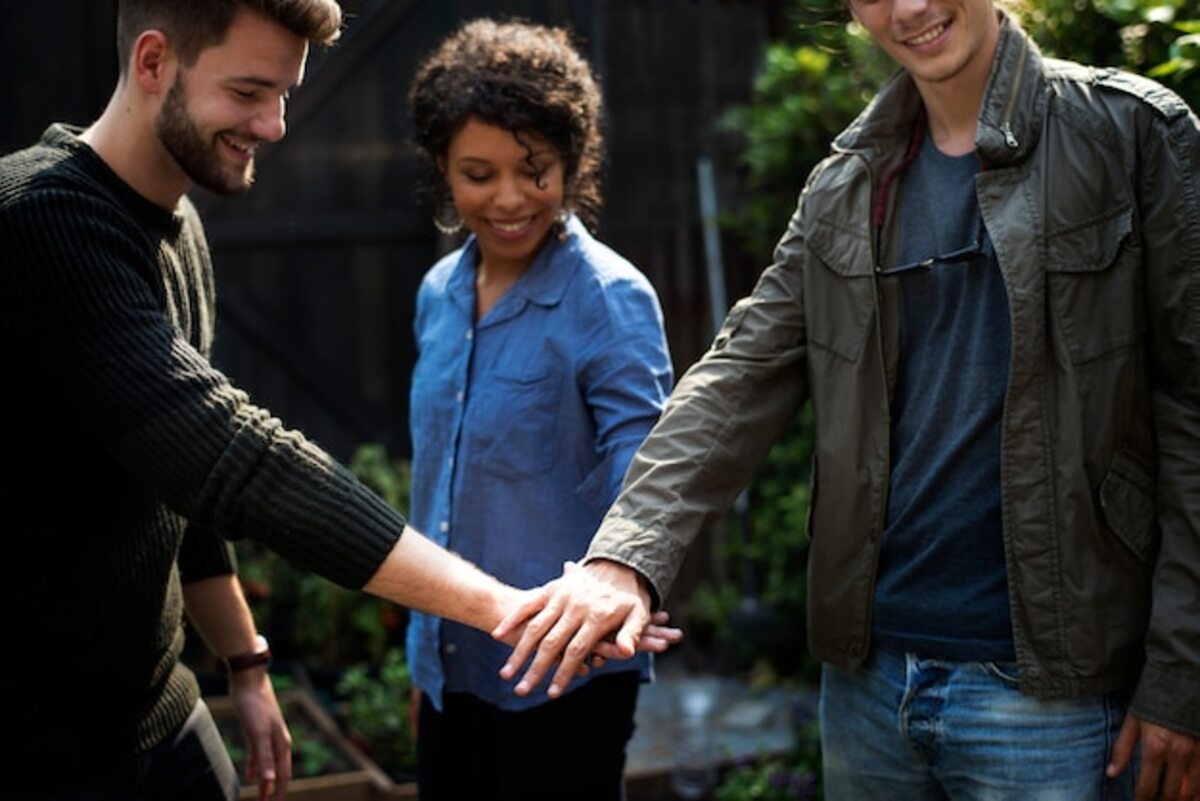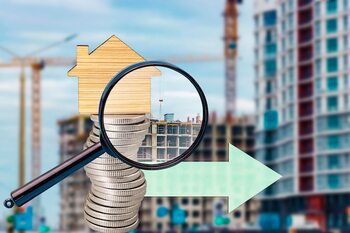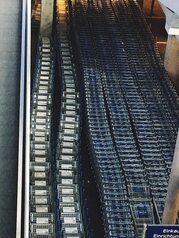The effect of neighborhood collaboration on your home's value

The value of your home not only depends on its location or physical characteristics but also on the environment in which it is located. Neighborhood collaboration emerges as a key factor that can increase the appreciation of your property. By fostering a sense of community and cohesion, neighbors can create a safe and attractive environment that, in turn, elevates the value of each home in the area. Discover how a good relationship with your neighbors can transform not only your quality of life but also the most important investment you have made: your house.
The importance of teamwork among neighbors to improve the community
Teamwork among neighbors is essential to create a healthy and harmonious environment that benefits the entire community. When residents come together to address common issues, such as neighborhood safety, maintenance of public spaces, or organizing social events, it strengthens the sense of belonging and fosters mutual trust. This type of collaboration not only improves interpersonal relationships but also generates a positive atmosphere that attracts new residents and potential buyers interested in settling in a vibrant and active community.
Additionally, joint efforts can result in meaningful projects that bring tangible value to the neighborhood. For example, initiatives like the creation of community gardens, recreational areas, or cleanup campaigns can beautify the environment and increase its overall appeal. These efforts not only enhance the quality of life for current residents but also positively influence the perception of the area among those looking to purchase a property. In summary, when neighbors collaborate and work together toward a common goal, they are directly investing in the future value of their homes and enriching their daily experience within the community.
2. Community projects that enhance the neighborhood's appeal
Community projects are one of the most effective ways to enhance the appeal of a neighborhood. Initiatives such as creating community gardens, organizing local fairs, or revitalizing public spaces can transform neglected areas into vibrant focal points for all residents. These efforts not only beautify the environment but also encourage interaction among neighbors, strengthening community ties and promoting a sense of belonging. When people feel connected and proud of their community, they are more likely to maintain their properties and contribute to the overall well-being of the neighborhood.
Moreover, these projects can attract new residents and investors, further elevating home values. An active and collaborative neighborhood is often perceived as a safe and desirable place, which is appealing to those looking to buy property. Investing time and resources in collective initiatives can create a domino effect: as the area's image improves, home prices tend to rise. At the end of the day, a good community project not only benefits current homeowners but also lays the groundwork for a prosperous future where everyone benefits from shared growth.
3. How mutual support creates a safe and friendly environment
Mutual support among neighbors is a fundamental pillar for the well-being of any community. When residents come together to help one another, a bond of trust is established that creates an environment where everyone feels safe. This support network can manifest in various ways, from neighborhood watch to the sharing of resources and skills. A neighborhood where neighbors look out for each other not only reduces the risk of crime and vandalism but also fosters a friendlier and more welcoming atmosphere, which attracts potential buyers and raises the overall property values in the area. Moreover, this sense of belonging encourages community activities that further strengthen relationships among residents. Events such as neighborhood fairs, informational meetings, or gardening groups not only allow friendships to develop but also promote a collaborative environment where everyone contributes to the common good. This social cohesion creates a place where people want to live, which is an important draw for those considering buying a home in the area. Therefore, investing in positive relationships with neighbors not only improves the quality of daily life but also positively impacts the economic value of the home.
4. The impact of community events on neighborhood perception
Community events play a crucial role in the perception residents have of their neighborhood. Activities such as fairs, festivals, and neighborhood meetings not only foster interaction among neighbors but also create a sense of belonging and local pride. When people engage in these activities, they develop stronger bonds with their neighbors and a greater identification with the place where they live. This emotional connection can translate into a positive image of the neighborhood, which in turn can influence the interest of potential buyers and the valuation of the real estate market.
Additionally, community events can enhance the safety and overall well-being of the area. By bringing neighbors together to share experiences and collaborate on common projects, a more vigilant and supportive environment is created. This type of social cohesion not only makes residents feel safer, but it can also attract new families and investors to the neighborhood. Thus, an active and dynamic neighborhood, where people care for one another and celebrate their collective achievements, becomes a magnet for those seeking not just a house, but a vibrant community. This directly contributes to the increase in property values within that collaborative environment.
5. Strategies to promote collaboration among neighbors
Fostering collaboration among neighbors begins with creating spaces for interaction. Organizing community events, such as neighborhood fairs, outdoor movie nights, or sports gatherings, can be an excellent way to break the ice and pave the way for new friendships. These events not only allow neighbors to get to know each other better, but they also promote a sense of belonging and pride in the community. By engaging in joint activities, each member of the neighborhood can contribute to building a safer and more welcoming environment, which positively impacts property values.
Another effective strategy is to establish digital communication groups, such as chats or social networks dedicated to the neighborhood. These platforms allow neighbors to share valuable information about safety, local events, or even recommendations for home services. Additionally, they can facilitate the organization of collective tasks, such as community cleanups or beautification projects. Promoting this type of digital interaction strengthens the bonds among residents and ensures that everyone is informed and engaged with the well-being of the environment. An active and connected community not only enhances the local quality of life but also increases interest in properties in the area.
6. Testimonials: Successful stories of neighborhood collaboration
The testimonies of those who have experienced the power of neighborhood collaboration are inspiring and reveal how a simple gesture can trigger a chain of benefits for the entire community. For example, in a neighborhood where residents decided to organize to create a community garden, they not only beautified their surroundings but also strengthened bonds between families. This initiative not only improved the aesthetics of the area but also significantly increased the interest of potential buyers, reflecting an increase in the value of surrounding properties. The stories of these neighbors demonstrate that working together toward a common goal can generate tangible and positive results.
Another notable case is that of a community that implemented a neighborhood watch program. Through regular meetings and sharing information about suspicious situations, residents were able to significantly reduce criminal incidents in their area. This joint effort not only provided peace of mind to families but also attracted new buyers interested in living in a safe and friendly place. Existing homeowners also noticed how their houses appreciated as part of a proactive community committed to collective well-being. These examples highlight how collaboration not only improves quality of life but also acts as a catalyst for increasing the property value of each involved home.
7. How social media can strengthen the local community
Social media has become a powerful tool for strengthening the local community, facilitating communication and the exchange of ideas among neighbors. Platforms like Facebook, Nextdoor, or WhatsApp groups allow residents to share information about local events, community initiatives, and specific neighborhood needs. By doing this, not only is a sense of belonging fostered, but a space is also created where neighbors can collaborate on projects that benefit everyone. This digital interaction can translate into stronger relationships and greater social cohesion, resulting in a safer and more appealing environment to live in.
Additionally, social media can be used to organize community activities that further strengthen the bonds between neighbors. From neighborhood fairs to cleanup days or recreational activities, these platforms allow for coordinating efforts and maximizing participation. As residents actively engage in their community through these events, they not only improve their quality of life and create shared memories, but also contribute to the increase in the value of their properties. An active and engaged neighborhood is perceived as a desirable place by future buyers, which can translate into a significant increase in real estate appreciation.
8. The influence of shared maintenance on real estate valuation
Shared maintenance among neighbors plays a fundamental role in real estate valuation, as it contributes to the creation of a pleasant and well-maintained environment. When residents organize to carry out collective tasks, such as taking care of green areas, cleaning common spaces, or repairing community infrastructure, a sense of belonging is generated that goes beyond simply residing in the same place. This collective commitment not only enhances the aesthetics of the neighborhood but also promotes a safe and welcoming atmosphere, factors that are highly valued by potential buyers and tenants.
Additionally, shared maintenance can positively influence other important aspects of real estate valuation. For example, an active community tends to establish rules and regulations that benefit all its members, thus creating a more harmonious environment. This can result in a decrease in problems related to vandalism or disorder, which is attractive to those looking to invest in properties. In summary, when neighbors collaborate in the care and maintenance of their surroundings, they are not only improving their immediate quality of life; they are also ensuring greater appreciation of their homes' value in the long term.
9. Long-term benefits of living in a cohesive community
Living in a cohesive community offers numerous long-term benefits that go beyond mere coexistence. Firstly, the sense of belonging and mutual support among neighbors fosters an environment where residents feel safe and protected. This security not only enhances individual quality of life but also contributes to neighborhood stability, which can result in lower crime rates and a more pleasant environment for everyone. When people come together to care for one another, they create a space where collective well-being is a priority, which is a significant attraction for potential buyers.
Additionally, cohesive communities often have access to better resources and services. Collaboration among neighbors can lead to joint initiatives such as organizing community events, creating shared gardens, or even collective efforts to improve local infrastructure. These projects not only increase satisfaction among current residents but also enhance the area's appeal to future buyers. In the long term, this type of active participation can result in a significant appreciation of real estate values, as properties in communities with strong social cohesion tend to maintain their value better against market fluctuations.



